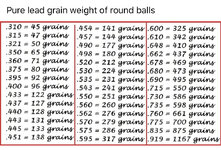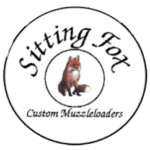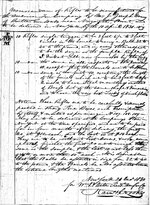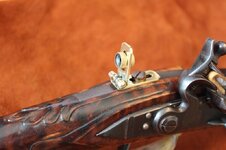Gauge was that ratio of how many balls to a pound of lead. You will read in many of the original journals from the rocky mountain/western fur trade period, the trappers would make references to rifles size by x amount of balls to the pound. When looking over the fur companies supply records you notice that they were shipping and sold lead and powder together in a ratio of 2 to 1, 2 lbs of lead to one pound of powder. Even the ledgers show that when a trapper purchased these items it was in the same ratio. The amount of powder to shoot that amount of lead? The theory is yes, maybe it seems to equate. Vol. 5 of The Rocky Mountain Fur Trade journal, Doyle Reid, AMM, wrote an article " Lock, Stock and Barrel: Arming the Far Western Mountaineers" where he put this theory to the test.
To add some more to the steel Henry, this is the copy of the original first order for them, note the details:
View attachment 827303
The first were ordered in 1831 and described: "10 rifles, single trigger, same as Dickert Gill sample... brown bbls.; length 3' to 3' 2" steel mountings instead of brass, but of the same shape and dimensions as brass mounted rifles, maple stock chequered grip, handsome pattern steel mounting, Ball mould to fit the caliber exactly," and ten more, "bbl. 3'6", 28 ga.$14. and to have the very best locks of 5" plate."
Later specifications called for 3-foot, 4-inch; 3-foot, 6-inch; and 3-foot, 8-inch barrels, checkered wrists, 10 to 11 pounds weight, and the gauge was sometimes 32. Crooks wrote J. J. Henry that the rifles were "to be manufactured with great care." The company was willing to pay up to $17 per rifle if they had superior locks. In 1832 the company demanded that the steel-mounted rifles be "made better quality." On September 9, 1833, the AMF ordered "20 Rifles-s[ingle] trigger 38" brl., 28/lb. [28 gauge] 5-inch waterproof [pan] very superior quality maple, chequered grip, steel mountings of a handsome pattern. Wiper to unscrew in middle. 10-11 pounds."





